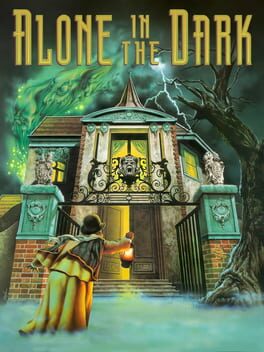Historically fascinating but very rough to play, even by the standards of its era. After playing Resident Evil I fully bought into the use of tank controls as a way of creating cinematic shots, but the average camera angle in this game is much less artful—although there is the occasional inspired moment, like switching to a shot outside the window looking in at yourself just before a monster bursts through. But I can forgive many control scheme fumbles in such an early 3D game.
What really gets me is the combat. Not the controls, which are actually fairly clever once you get the hang of them, but the absolute opacity of what's expected of the player. Some enemies will crumple from a few hits, but others seem to be effectively invulnerable, with no rhyme or reason as to why. I stabbed a rat a dozen times with a knife and it never died—but crucially, it did fall back and emit a gout of blood, which should have been a clear signal that it was getting injured.
I don't mind being weak and pathetic. It's a baseline expectation of the genre, and it's cool to see it present right here at the root. But when a rat or a spider is indestructible, it diminishes the fear of the highly-destructible zombies and birds you also fight. When you can't enter a room not because its resident is too strong for you, but because it randomly ended up camped in the doorway and a single hit will stagger you back out of the room, it brings mechanics into primacy over mood in a way that diminishes the effectiveness of the game.
Frustrations aside, it's fascinating how Alone in the Dark engages with saved games. Where its successors parcel out saves as a resource to be carefully applied, this game not only allows you to save freely, it demands you do so. Death comes swiftly and unexpectedly. Walk in the wrong space, open the wrong door, get cornered by a rat, and you're gone. You can even end up soft-locking yourself without noticing, only to find out much later. The rational response is to hoard a mountain of saves in different places at different times to be able to stitch together one final flawless run—foreshadowing a common mode of play for stealth games in the process.
What really gets me is the combat. Not the controls, which are actually fairly clever once you get the hang of them, but the absolute opacity of what's expected of the player. Some enemies will crumple from a few hits, but others seem to be effectively invulnerable, with no rhyme or reason as to why. I stabbed a rat a dozen times with a knife and it never died—but crucially, it did fall back and emit a gout of blood, which should have been a clear signal that it was getting injured.
I don't mind being weak and pathetic. It's a baseline expectation of the genre, and it's cool to see it present right here at the root. But when a rat or a spider is indestructible, it diminishes the fear of the highly-destructible zombies and birds you also fight. When you can't enter a room not because its resident is too strong for you, but because it randomly ended up camped in the doorway and a single hit will stagger you back out of the room, it brings mechanics into primacy over mood in a way that diminishes the effectiveness of the game.
Frustrations aside, it's fascinating how Alone in the Dark engages with saved games. Where its successors parcel out saves as a resource to be carefully applied, this game not only allows you to save freely, it demands you do so. Death comes swiftly and unexpectedly. Walk in the wrong space, open the wrong door, get cornered by a rat, and you're gone. You can even end up soft-locking yourself without noticing, only to find out much later. The rational response is to hoard a mountain of saves in different places at different times to be able to stitch together one final flawless run—foreshadowing a common mode of play for stealth games in the process.
